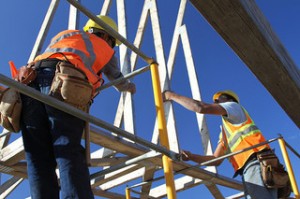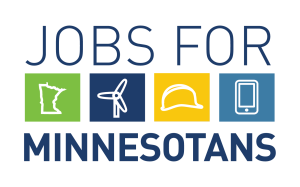Jobs & Economic Impact
Jobs & Economic Impact
The Northeast Minnesota region faces significant economic disparities compared to the Twin Cities. Copper-nickel mining projects, like NewRange Copper Nickel and Twin Metals Minnesota, are poised to create substantial economic opportunities and well-paying jobs in a region that needs it. These projects are already generating jobs during the planning stages and will require millions of construction hours to build the mines, resulting in thousands of family-sustaining jobs for decades to come. For example, the NewRange Copper Nickel project will create approximately 360 long-term jobs with annual wages and benefits estimated at $36 million, while the Twin Metals project is expected to directly employ 750 people long-term.
A study by the Labovitz School of Business and Economics at the University of Minnesota Duluth found that each mining job generates approximately two spinoff jobs in other industries. These spinoff jobs provide new employment opportunities in manufacturing, retail, restaurants, and green energy, stabilizing communities. The NewRange Copper Nickel project alone will generate more than 600 indirect and induced jobs, with Twin Metals Minnesota estimating an additional 1,500 spinoff jobs.
Copper-nickel mining projects bring significant economic growth and renewal to Minnesota. These projects attract new investments and generate millions of dollars in tax revenues. Since 2006, NewRange Copper Nickel has invested over $320 million in its project, and Twin Metals Minnesota has invested over $550 million since 2010. These investments have supported Minnesota’s economy and created job opportunities in local communities. The Department of Natural Resources estimates that copper-nickel mining projects will generate approximately $3 billion for the Minnesota Permanent School Trust Fund, benefiting nearly 900,000 K-12 students across the state.
Moreover, these companies continue to invest in local communities and non-profit organizations. Since its creation in 2010, Twin Metals Minnesota has provided more than $650,000 in financial support to various community organizations, including the United Way of Northeastern Minnesota and Hunger Solutions Minnesota.
By supporting responsible mining, we support other industries and products that improve the daily lives of Minnesotans, from transportation to advancing green technology. Ensuring these projects follow timely, predictable, and transparent regulatory and environmental review processes is crucial. Rigorous and thorough reviews by Minnesota’s strict regulatory bodies provide confidence that these projects will be conducted responsibly. Without fair processes, Minnesota risks losing these investments to regions with less stringent environmental and labor safety regulations.
Responsible Job Creation

Minnesota has long been a leader in strict regulatory and environmental review processes for natural resource development. All mining projects must meet rigorous state and federal regulations, involving multiple agencies to ensure fair, transparent reviews based on sound science. This established process ensures projects follow a predictable review path.
However, the mining permit approval process must be more efficient and responsive to the needs of both the industry and the communities affected by mining activities, while still ensuring that environmental and safety standards are met, which is why we advocate for broad permitting reform across industries including mining.
Strategic metals resources were discovered in Minnesota over 70 years ago, but viable and environmentally responsible technologies were not available at the time. Today, advanced mining technologies make the development of copper-nickel mining operations feasible while maintaining environmental responsibility. These technologies allow mining, tourism and a clean environment to co-exist, as demonstrated by Minnesota’s Iron Range over the past 130 years.
Projects like those of NewRange Copper Nickel and Twin Metals Minnesota adhere to federal regulations and demonstrate a strong commitment to environmental stewardship. They must be approved by several agencies, including the Minnesota Department of Natural Resources, the U.S. Environmental Protection Agency, and the U.S. Bureau of Land Management. With state-of-the-art technologies and strict regulatory processes, Minnesota can achieve both new job creation and environmental protection.
